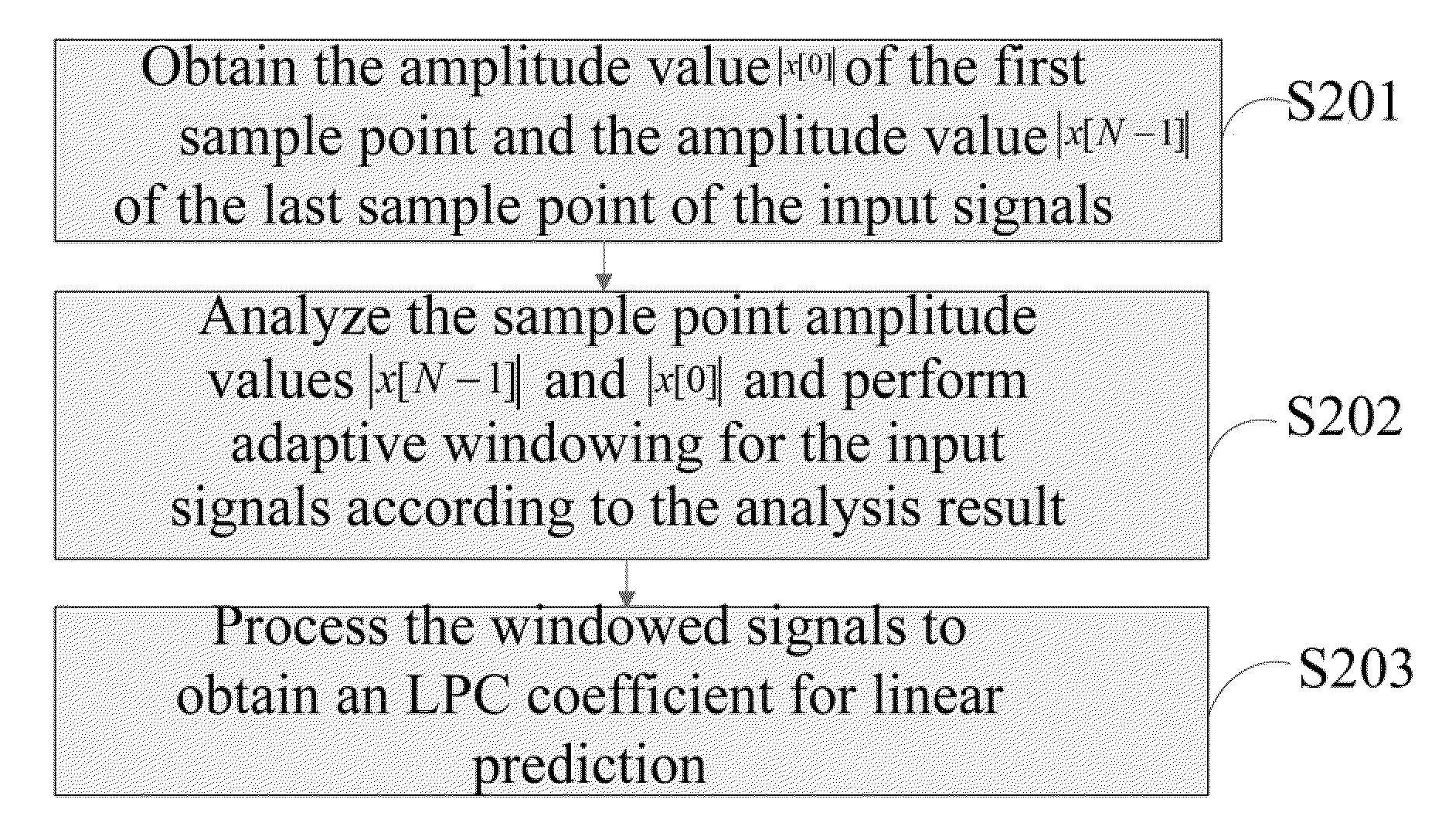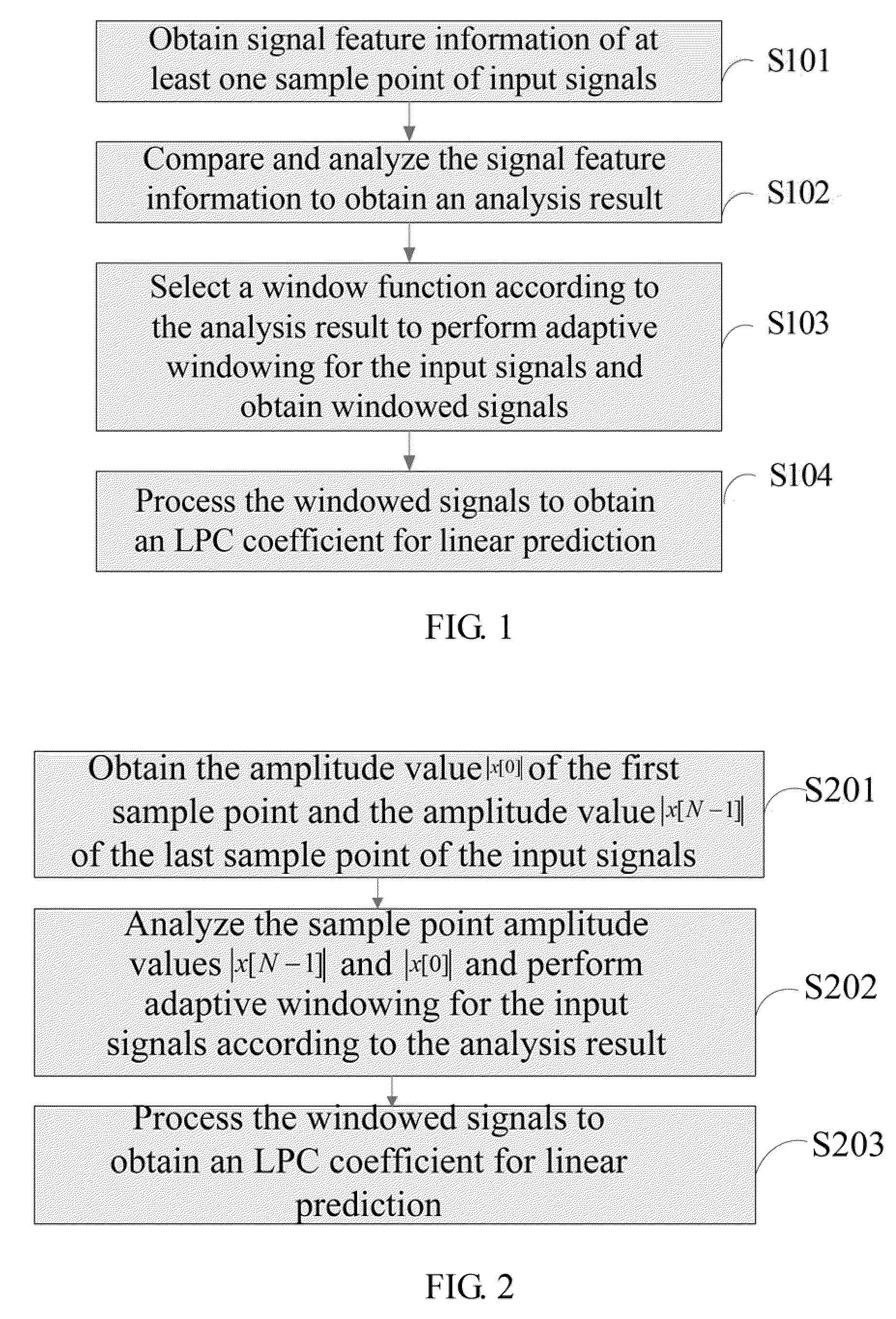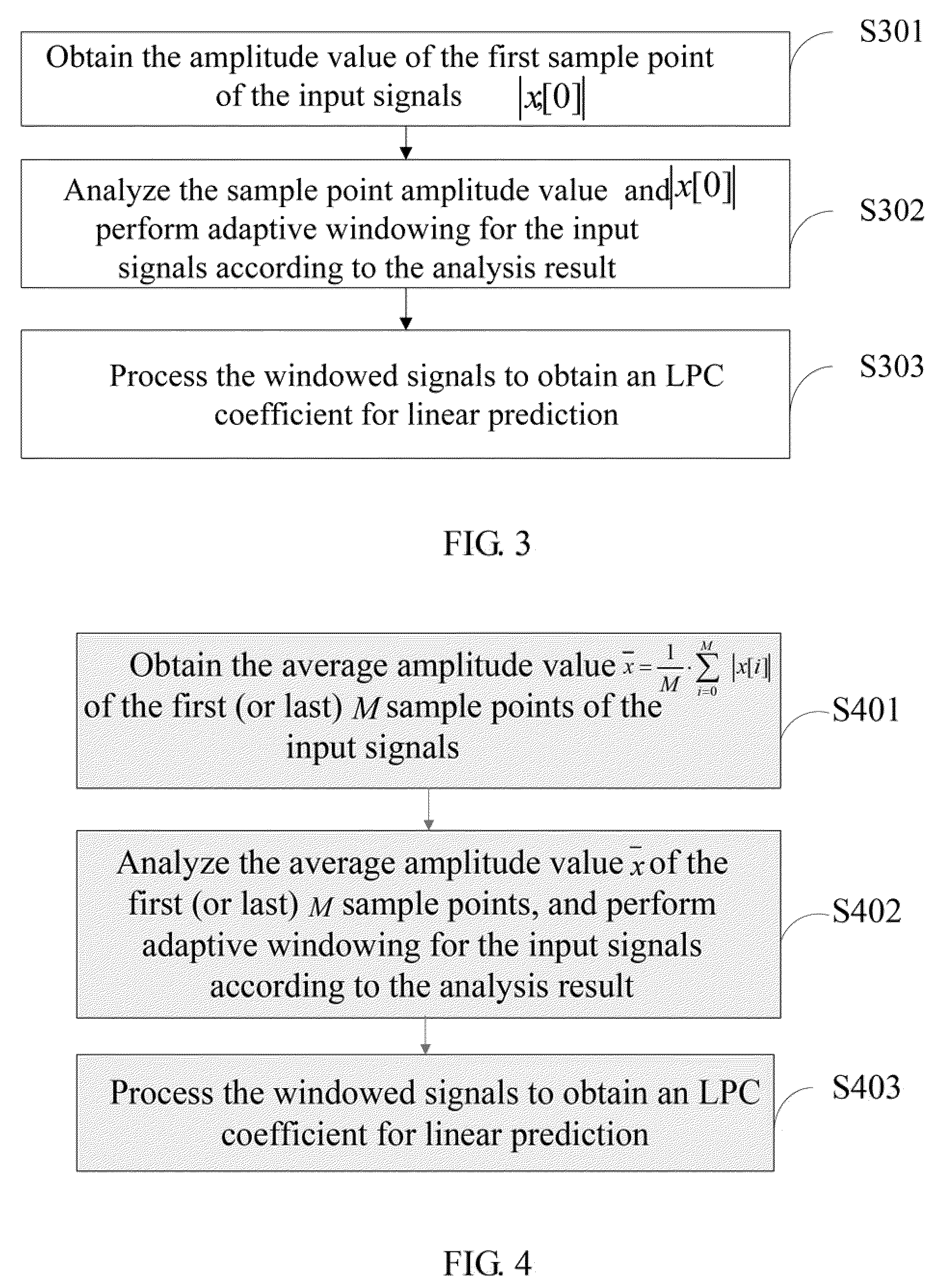Method, apparatus and system for linear prediction coding analysis
a linear prediction and coding analysis technology, applied in the field of methods, can solve the problems of increasing the complexity of lpc analysis and the inability to optimize the linear prediction performance, and achieve the effect of improving the prediction performance of lpc and little increasing the complexity of coding
- Summary
- Abstract
- Description
- Claims
- Application Information
AI Technical Summary
Benefits of technology
Problems solved by technology
Method used
Image
Examples
embodiment 1
[0050]As shown in FIG. 2, an LPC analysis method provided in the first embodiment of the present invention includes the following steps:
[0051]S201. Obtain an amplitude value |x[0]| of a first sample point and an amplitude value |x[N−1]| of a last sample point of input signals, where x[i], i=0, 1, . . . , N−1 are input signals, N is the number (such as 40, 80, 160, 240, or 320) of sample points of the input signals. The input signals herein refer to signals input for LPC analysis, and may be a frame of signals, or may be a frame of signals plus a segment of signals in a history buffer (such as L sample points in the history buffer, where L is a positive integer such as 40, 80, 160, 240, or 320, according to the type of codec).
[0052]S202. Analyze amplitude values |x[0]| and |x[N−1]| of the sample point and perform adaptive windowing for the input signals according to the analysis result.
[0053]For example, when the number of sample points of the input signals is 40:
[0054]If the amplitu...
embodiment 2
[0073]As shown in FIG. 3, an LPC analysis method provided in the second embodiment of the present invention includes the following steps:
[0074]S301. Obtain an amplitude value |x[0]| of a first sample point of input signals, where x[i], i=0, 1, . . . , N−1 refers to input signals, and N is the number of sample points of the input signals. The input signals herein refer to signals input for LPC analysis, and may be a frame of signals, or may be a frame of signals plus a segment of signals in a history buffer (such as L sample points in the history buffer, where L is a positive integer, such as 40 or 80, and value of L varies with the type of the codec).
[0075]S302. Analyze amplitude value |x[0]| of the sample point and perform adaptive windowing for the input signals according to the analysis result.
[0076]If the amplitude value |x[0]| of the first sample point of the input signals is greater than or equal to a preset threshold thr, the input signals are windowed by using the first wind...
embodiment 3
[0085]As shown in FIG. 4, an LPC analysis method provided in the third embodiment of the present invention includes the following steps:
[0086]S401. Obtain an average amplitude value
[0087]x_=1M·∑i0Mx[i]
of the first (or last) M sample points of input signals, where x[i], i=0, 1, . . . , N−1 refers to input signals, and N is the number of sample points of the input signals. The input signals herein refer to signals input for LPC analysis, and may be a frame of signals, or may be a frame of signals plus a segment of signals in a history buffer (such as L sample points in the history buffer, where L is a positive integer, such as 40 or 80, and value of L varies with the type of the codec).
[0088]S402. Analyze the average amplitude value x of the first (or last) M sample points, and perform adaptive windowing for the input signals according to the analysis result.
[0089]If the average amplitude value x of the first (or last) M sample points is greater than or equal to a preset threshold...
PUM
 Login to View More
Login to View More Abstract
Description
Claims
Application Information
 Login to View More
Login to View More - R&D
- Intellectual Property
- Life Sciences
- Materials
- Tech Scout
- Unparalleled Data Quality
- Higher Quality Content
- 60% Fewer Hallucinations
Browse by: Latest US Patents, China's latest patents, Technical Efficacy Thesaurus, Application Domain, Technology Topic, Popular Technical Reports.
© 2025 PatSnap. All rights reserved.Legal|Privacy policy|Modern Slavery Act Transparency Statement|Sitemap|About US| Contact US: help@patsnap.com



